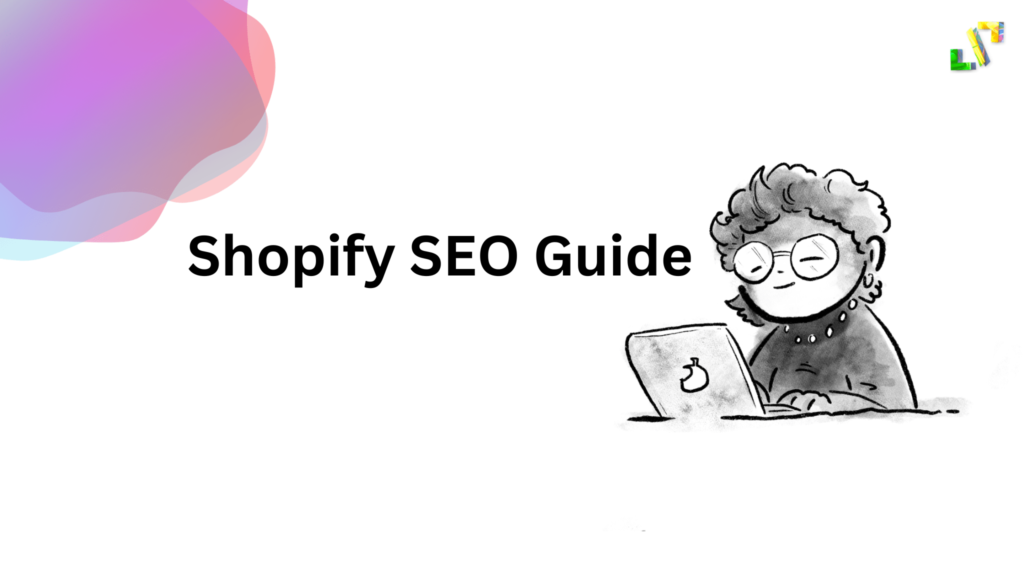To sell their items online, firms may use Shopify, an e-commerce platform. Retailers may also use Shopify to set up in-person sales with consumers. One way to increase your company’s visibility is to enhance your Shopify store’s visibility in search engines like Google, Bing, and Yahoo.
The top search engine ranking of a company may be improved using Shopify, helping both the firm and its customers. Title tags, meta descriptions, URLs, websites, products, collections, and alt text for photographs are just some of the aspects of a Shopify store that may be optimized for search engines and the user experience.
What does "SEO for Shopify" really entail?
SEO (Search Engine Optimization) is the process of refining a Shopify website’s content and technical style to increase the quality and volume of organic search traffic delivered to the store. It’s possible that doing any of the following might help your Shopify site’s SEO:
- Make sure the product pages provide optimized title tags and page titles.
- Improve Shopify’s usability by fixing the site’s menu.
- You should use the page’s major focus keywords and secondary focus keywords throughout the page’s text.
- Shopify’s Built-In SEO Apps and Tools
Shopify’s native SEO tools make it easy for even SEO newbies to boost their website, which is just one of the many reasons why this platform is so well-suited to search engine optimization.
Sitemap.xml and robots.txt are two files that are automatically generated by Shopify.
By default, the Shopify theme will produce an HTML title tag that includes your store’s name.
Altering the alt text of a product picture may be done directly on each product page.
You may modify the page’s title, meta description, URL, and other features directly in your browser.

Visibility
Being more visible to the target audience is the a key factor that accelerate demand.
Successful Search Engine Optimization Techniques for an Online Storefront
1. Improve Your Shopify Store’s Organization
Your content’s page structure will have a significant impact on how well your SEO campaign performs. If visitors can find what they’re looking for fast and simply, they’ll spend more time exploring your site. If this works, it might boost your site’s visibility in search engines.
2. Boost your site’s loading time.
Website accessibility correlates with how quickly it loads. If your site is user-friendly and fast to load, visitors are less likely to get frustrated. This means they may spend more time on your site.
3. Employ a mobile-friendly layout
Shopify leverages responsive design to ensure that your store looks great across all platforms, from desktop computers and tablets to mobile phones.
Incorporating responsive themes into your website design has the potential to greatly improve the user experience, which in turn might increase the amount of time visitors spend on your site. Google takes into account how long a user spends on a page as a signal of how valuable a website is, so making your site easy to read and navigate will improve your rankings. With better visibility in SERPs and easier navigation, more people will be attracted to your site and more will make a purchase.
4. Investigate many options to find the best keywords to use.
If an SEO guide for Shopify doesn’t include how to do keyword research, it’s missing a major step. But where do you start looking for the right keywords to drive traffic to your store?
Instead of jumping right into using complex technologies, it’s best to first identify at least five key areas of interest to your target audience that are also directly related to the value proposition you’re making.
5. Make sure each Shopify product page is optimized separately
You should now have a list of keywords and an organized web structure. The use of keywords is the next step in optimizing storefront pages. Get started at the homepage of your site. A website’s most popular page might be its front page, its principal product line, or its sales page. We are talking about the most lucrative and conversion-friendly websites.
6. Optimal e-commerce success
Search engines utilize backlinks as a signal of how popular a site is among users. Think of it as SEO’s equivalent of “word of mouth.” It’s an off-site SEO strategy predicated on increasing one’s visibility and credibility in the eyes of one’s target audience.
7. Use content marketing to boost your search engine rankings.
Now that you’ve gotten everything else set up, let’s talk about content marketing. People will visit your website mostly because of the information it contains. If you run an online shop, you could be tempted to skim through some of the content inside or assume that the information already provided is enough to describe your wares.
It is the firm belief that your online business will thrive if you make the time and effort to regularly provide new content that improves the overall user experience on your site.
It’s normal to feel stuck while you’re trying to figure out what to write, but it doesn’t mean you have to give up. Make a note of everything your customers have asked you and anything else you think they may be curious about. Not product details, but rather responses to questions.
Consumers and potential customers may get to know your company and its products or services via your content without feeling obligated to buy anything right away. This is also an easy way to improve your site’s search engine rankings for a wider variety of keywords and get more inbound connections.
How to Get the Most Out of Search Engine Optimization For Your Shopify Site?
- Subsequent to the title, you should fill up the text and meta description with information about your business that is heavy on relevant keywords.
- It’s important to include both wide and narrow keywords in the copy for your homepage.
- Assume the worst and be ready to deal with it.
- Products and frequently asked questions should both have structured data included.
Conclusion
Despite the fact that Shopify SEO requires time and attention, the benefits of Shopify SEO, such as improved search engine optimization ranking, high performance, and sales, are crucial to the success of your online retail businesses. In order to boost the quantity of organic traffic your e-commerce website gets, you should use the aforementioned strategies. Additional Shopify ecommerce solutions for websites, such as the incorporation of Shopify apps for SEO, could potentially improve your site’s search engine optimization.
Reviewed By
-
algorithmchttps://blog.algorithmc.com/author/algorithmc/
-
algorithmchttps://blog.algorithmc.com/author/algorithmc/
-
algorithmchttps://blog.algorithmc.com/author/algorithmc/
-
algorithmchttps://blog.algorithmc.com/author/algorithmc/




